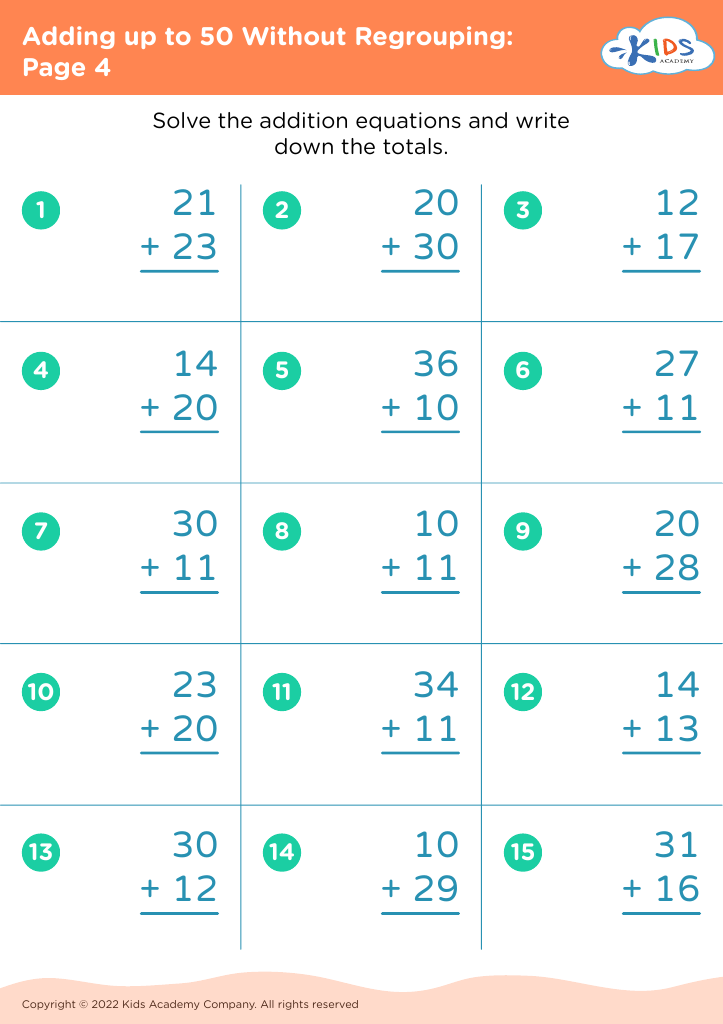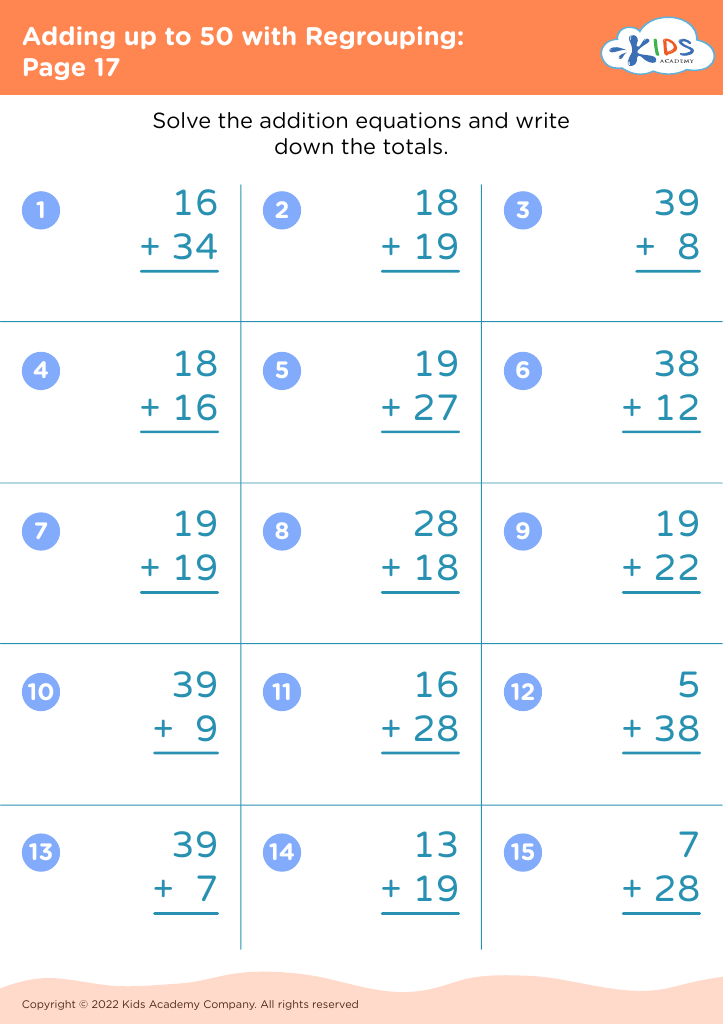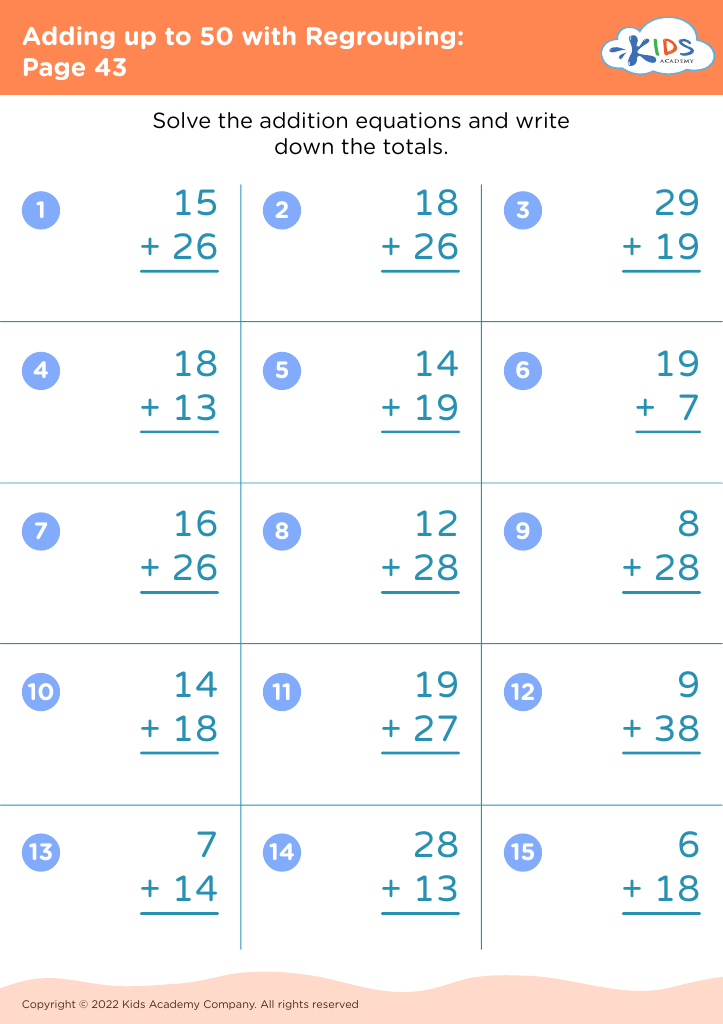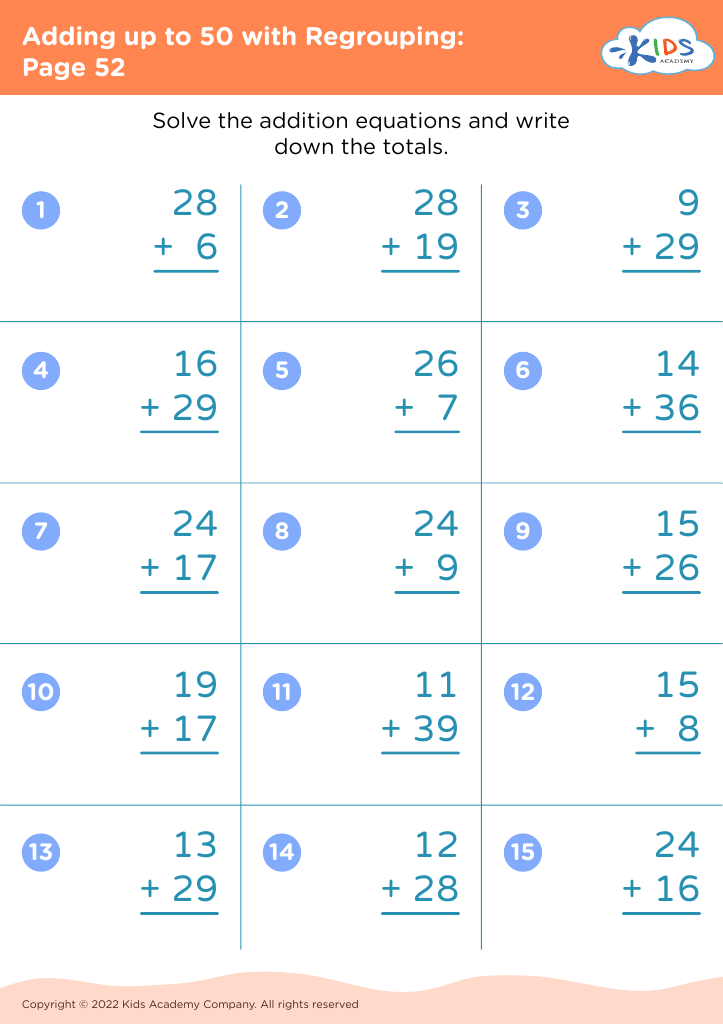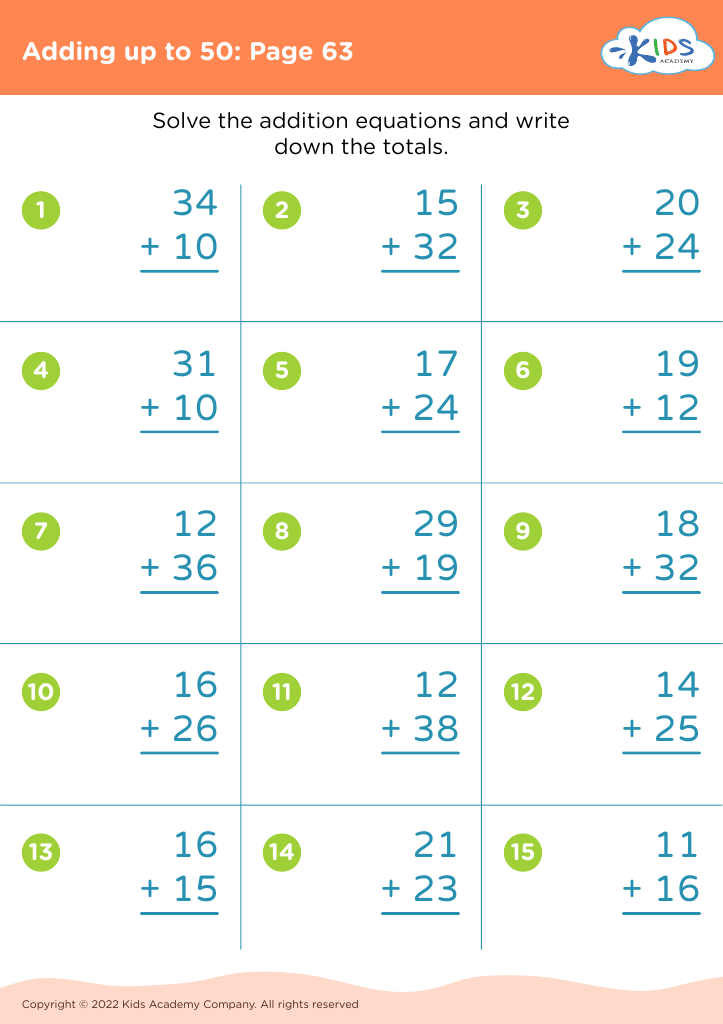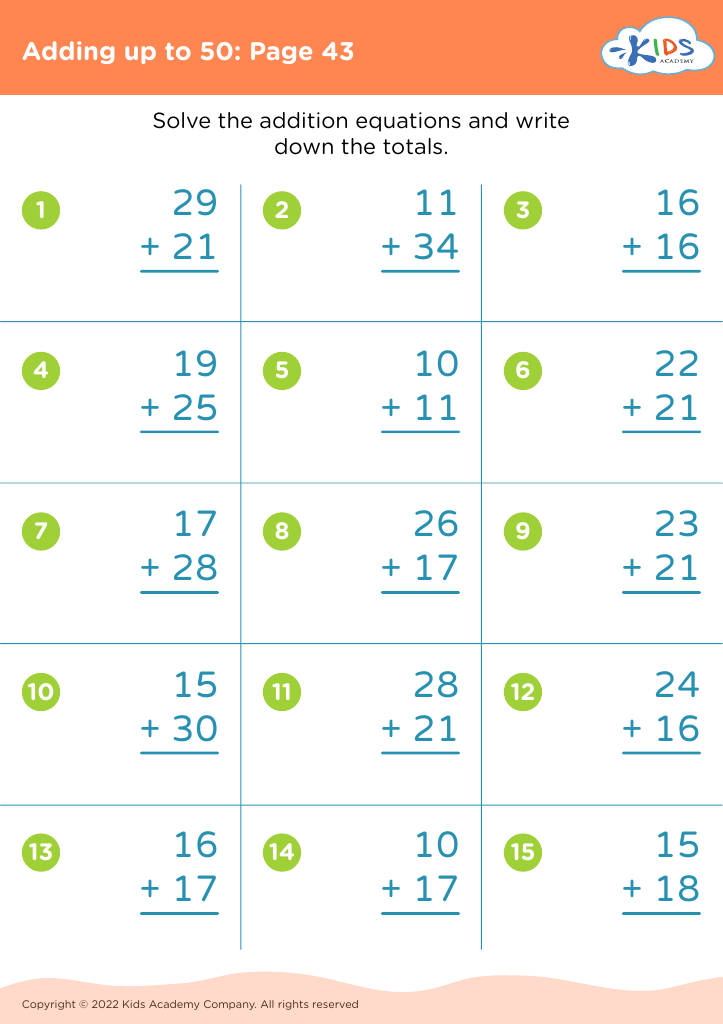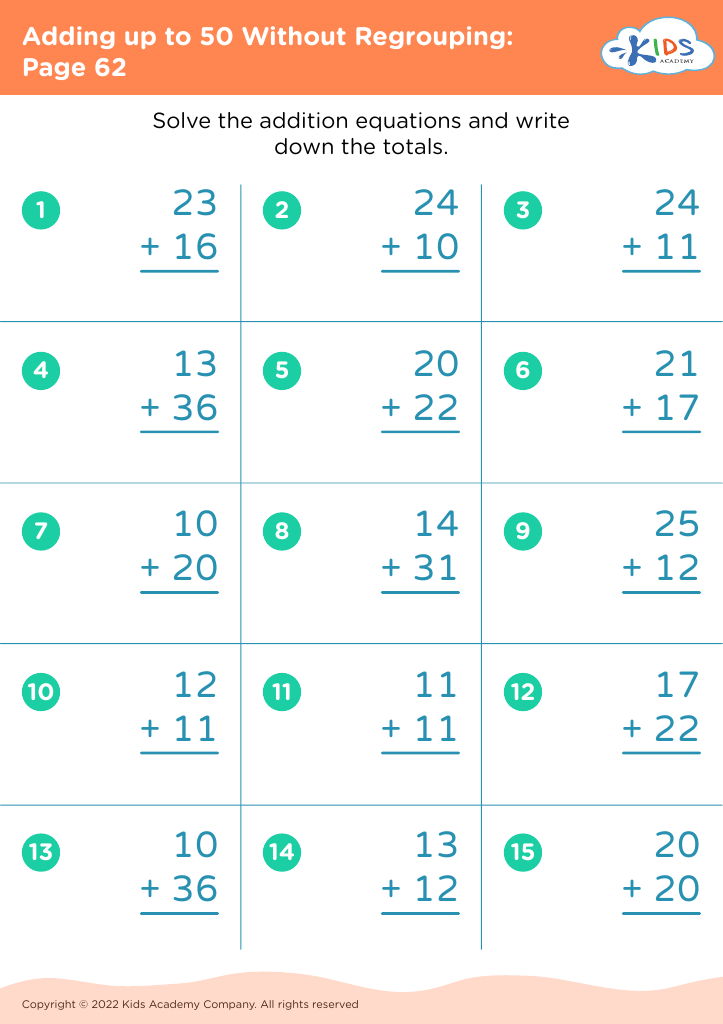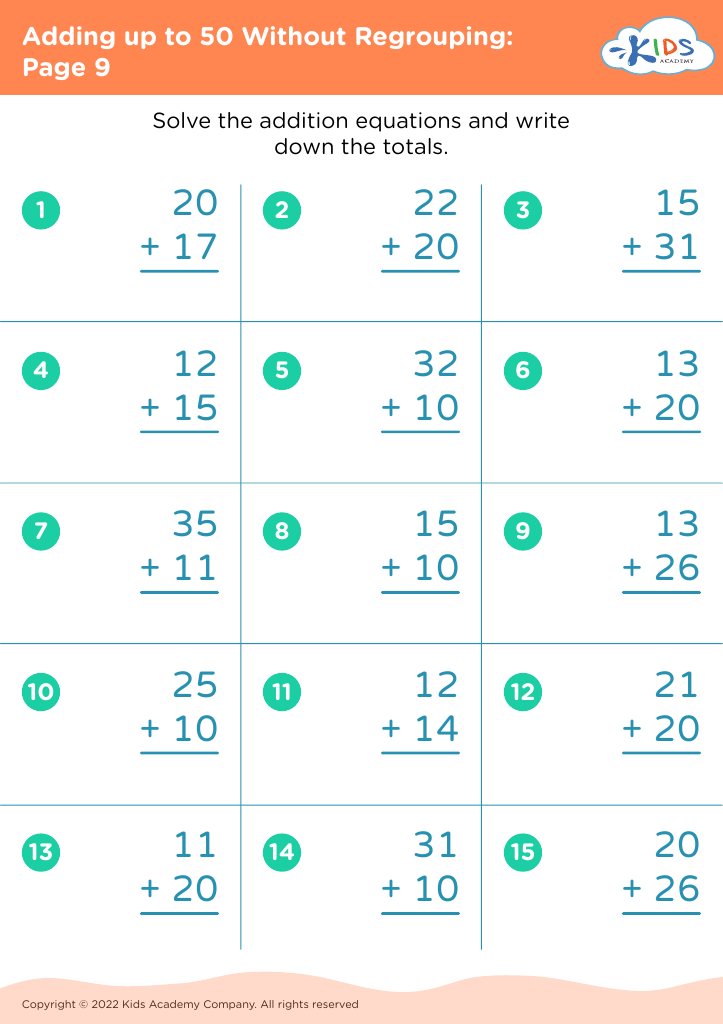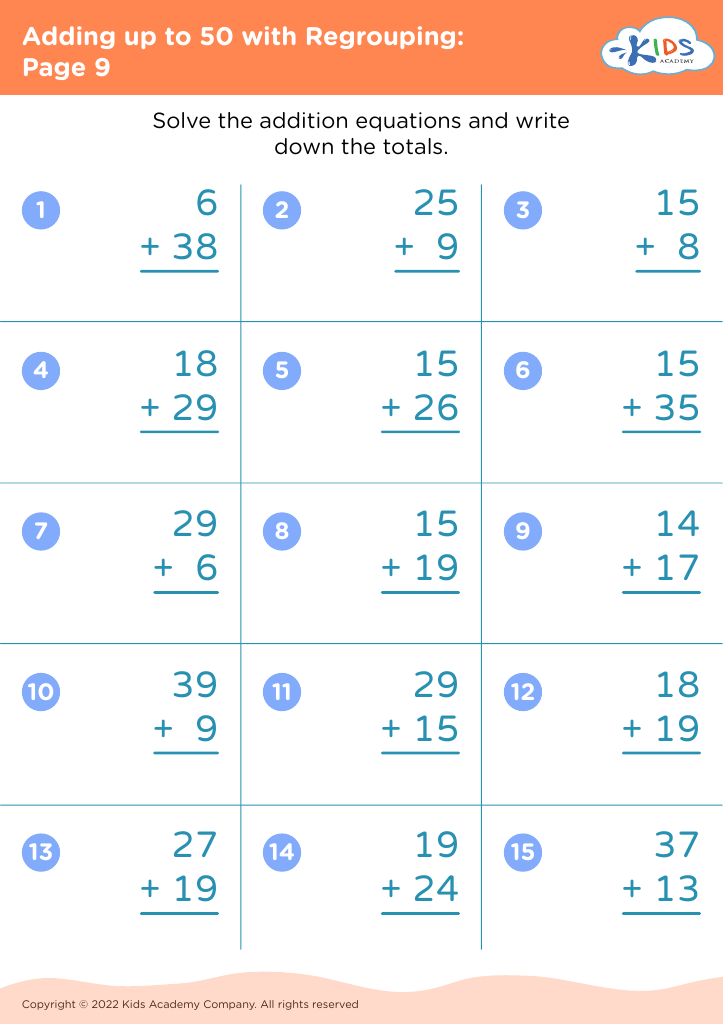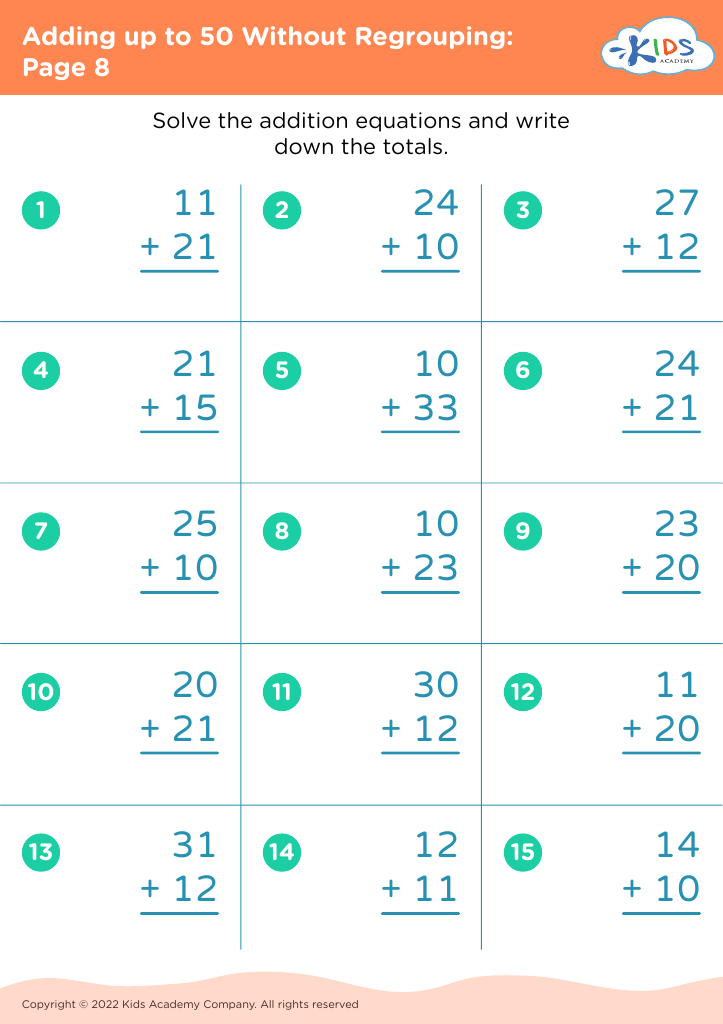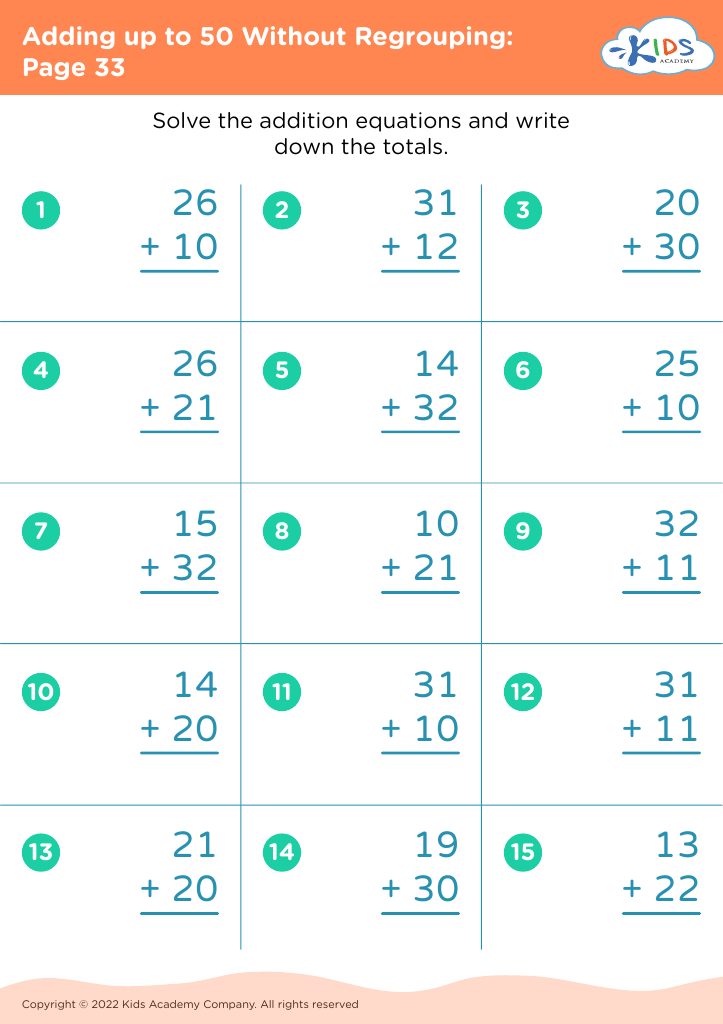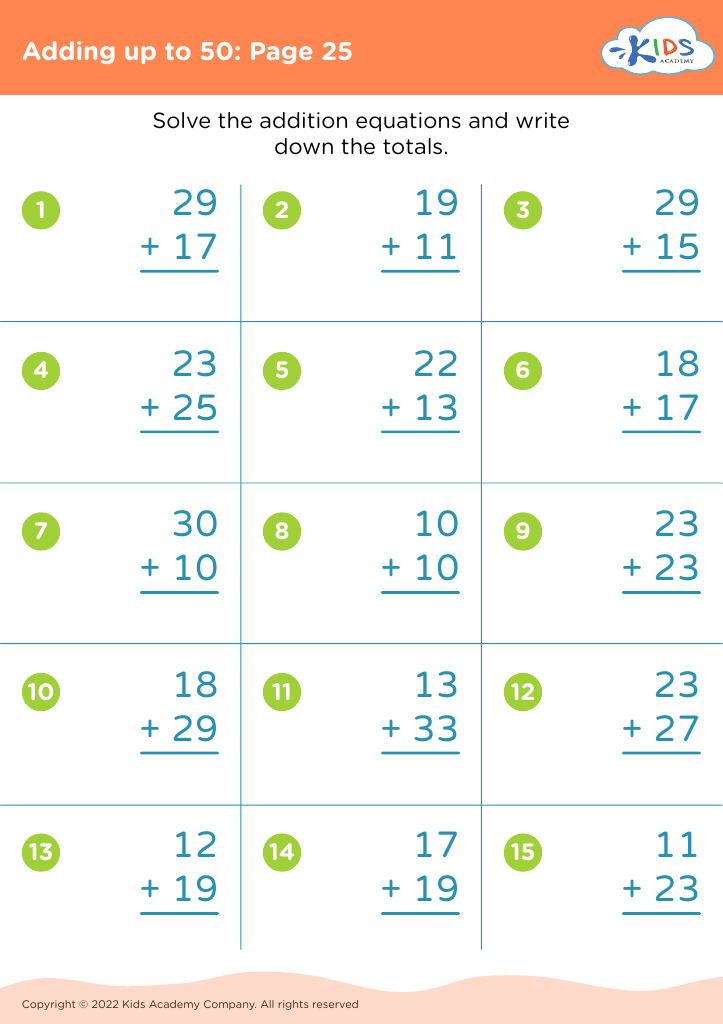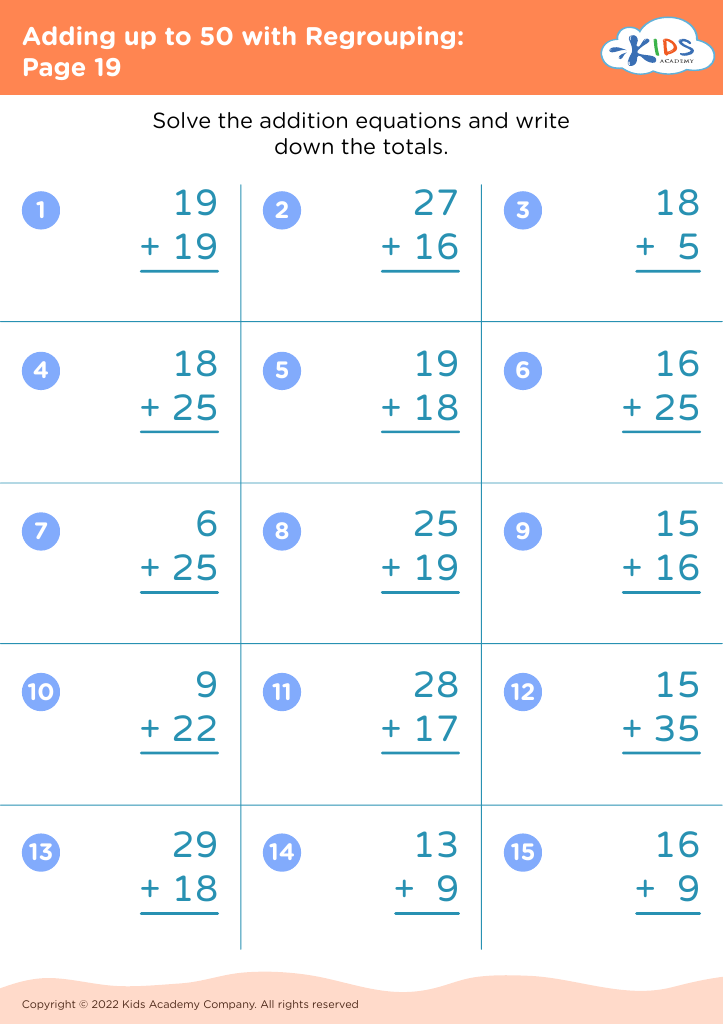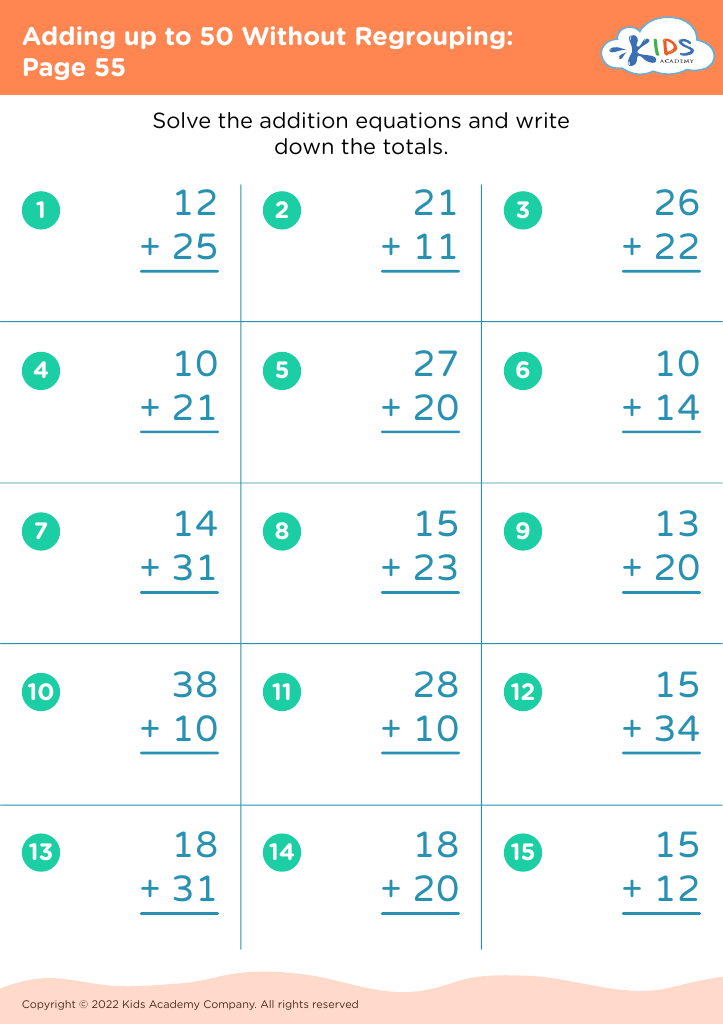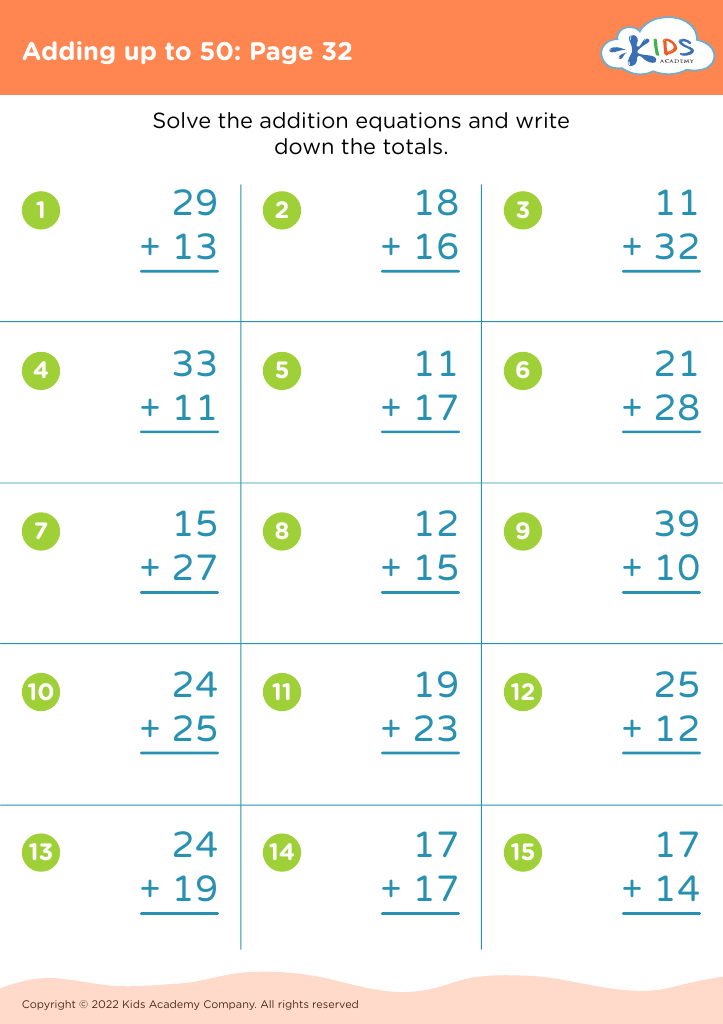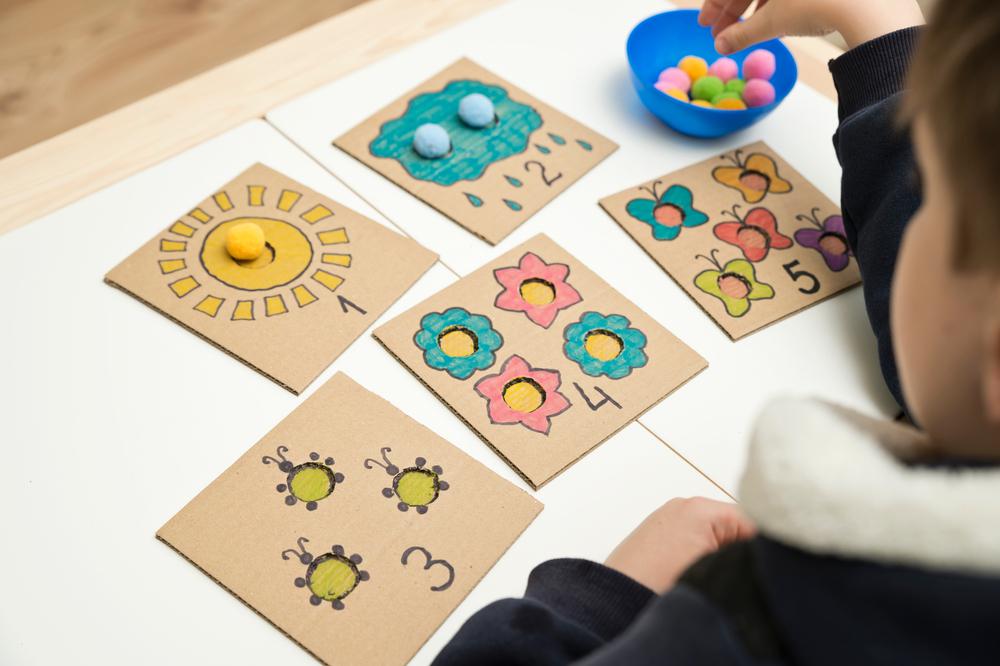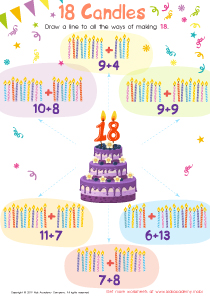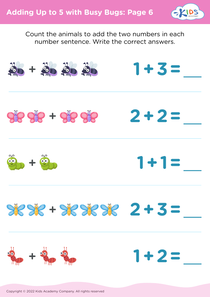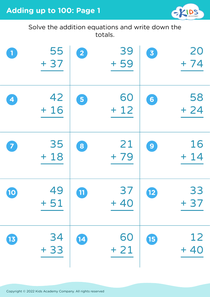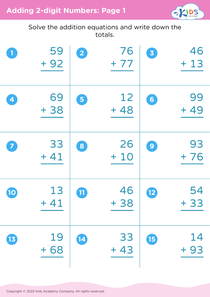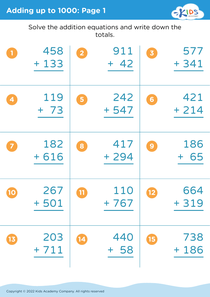Addition Practice Adding up to 50 Worksheets for Ages 5-8
16 filtered results
-
From - To
Welcome to our comprehensive collection of "Addition Practice Adding Up to 50 Worksheets" designed specifically for children aged 5-8! These engaging worksheets aim to enhance early math skills while making learning fun. Each worksheet provides a variety of addition problems, gradually increasing in complexity to support young learners in mastering their addition skills. With colorful designs and age-appropriate activities, children will enjoy practicing their math in an interactive way. Perfect for both classroom use and homeschooling, our addition worksheets help build confidence and improve accuracy in adding numbers up to 50. Start your child's math journey today!
Parents and teachers should prioritize addition practice that sums up to 50 for children aged 5-8 as it lays a critical foundation for mathematical understanding. During these formative years, children develop key cognitive skills essential for future learning, and mastering addition is a fundamental step in that process. Proficiency in addition not only builds confidence, but also supports the acquisition of more advanced mathematical concepts such as subtraction, multiplication, and even basic problem-solving techniques.
Practicing addition within this range also enhances number sense, which is vital for children to grasp the relationship between numbers and how they interact. Engaging children in interactive addition exercises can make learning fun and can significantly boost their motivation and interest in mathematics. Furthermore, making these connections early helps prevent math anxiety later in their educational journey.
In addition, reinforcement at home or in the classroom through games, visual aids, and real-life scenarios allows for differentiated learning while meeting each child's individual needs. This holistic approach to addition practice not only empowers students academically but also equips them with skills they will use throughout their lives, affirming the important role both parents and teachers play in shaping confident, competent learners.

